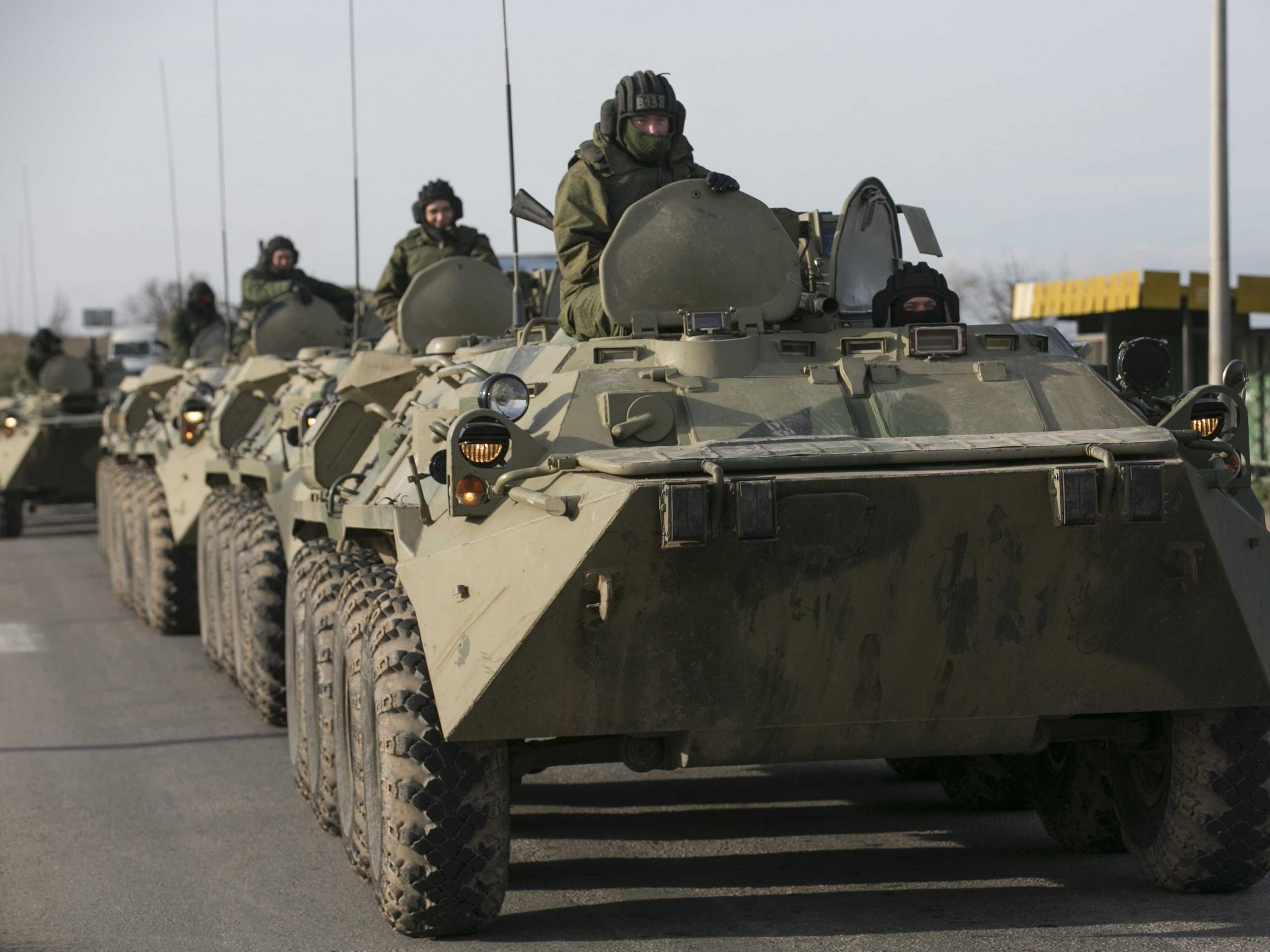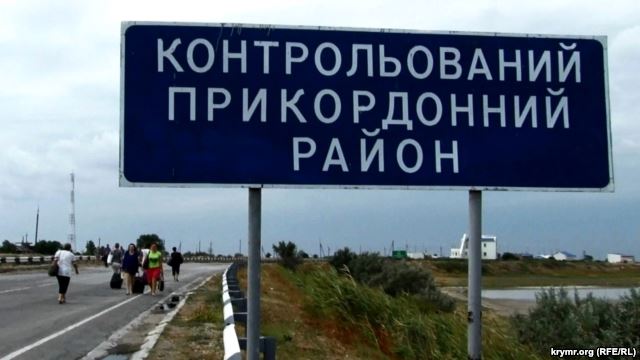Military analysts Volodymyr Horbulin and Oleksandr Lytvynenko discussed Russia’s longstanding plans to subjugate Ukraine at a joint briefing on the theme of “Crimea. War: Background of the Russian aggression,” held at the Ukrainian Crisis Center in Kyiv, Thursday, February 18.
According to Volodymyr Horbulin, director of the National Institute for Strategic Research, Russia had been preparing for aggression against Ukraine and wanted to take advantage of Viktor Yanukovych’s rein to “dismantle” its sovereignty and independence. To this end, the Kremlin made use of former heads of the Defense Ministry, the Security Service of Ukraine and the Ministry of the Interior.
“Our army was deliberately destroyed, the security forces came under the control of Russian curators. The government of the country signed shameful, treacherous agreements and the pro-Russian political and criminalized groups began an open struggle against the Ukrainian state. Strategic branches and sectors of the economy came under the control of Russian capital, which was closely tied to the Russian government,” he said.
With the beginning of Maidan in Kyiv, plans were set in motion to occupy Crimea, with Russian citizens playing key roles. “Between November 2013 and February 2014 there was a consolidation of pro-Russian forces in Crimea, illegal armed groups were being organized, a political and organizational infrastructure was being created for the occupation of the peninsula,” he said. Additionally, Russia significantly increased reconnaissance and undercover activities on Ukrainian territory. The Crimean situation was designed to spread instability to the eastern and southern regions of Ukraine, where so-called “popular revolts” were to take place as well.
Russian military exercises intensified dramatically in close proximity to the Ukrainian border. “There were 18 such exercises conducted and more than 100,000 troops participated,” he said
“As a result, we were, so to speak, in very different conditions when we clashed. To draw an analogy, the ‘Russian Spring’ operation was similar to the attack of an armed soldier who trains constantly and who, in addition, has received a dose of potent drugs. His opponent was in intensive care, attached to an IV line and still under the influence of anesthesia,” he said.
But the lack of readiness for war, in his view, helped Ukraine. “The shock was replaced by outrage and anger, and the country answered the aggression with a powerful wave of patriotism and determination, which not only stopped the enemy but testified to the emergence of the Ukrainian nation,” he said.
Oleksandr Lytvynenko, the deputy secretary of National Security and Defense Council of Ukraine, said the events of 2014-2015 in Ukraine were not accidental and must not be viewed separately from previous Russian policy toward Ukraine and from its general policy that sees the world through the prism of the so-called confrontation with Western countries.
“Domination of Ukraine is a Russian strategic objective that has emerged not today, not yesterday and not even 300 years ago,” he said. “Russia’s goals were never limited to concrete regions. It was always a question of the entire Ukrainian state,” he said. He also pointed out that Russia had developed strategic plans to reunify the post-Soviet countries still in 1991.
Crimea was to be the first element of a larger plan. “As if on order, active destabilizing activities in 9 regions of Ukraine began on March 1, 2014. On April 6, assaults on administrative buildings in Kharkiv, Donetsk, Luhansk were launched concurrently, which indicated carefully planned measures,” he said.
In Lytvynenko’s view, there were two scenarios developed by the Russian leadership.”After the victory of Maidan and the flight of Yanukovych, Russians acted according to two previously prepared plans. The first and most important for them was the restoration of the power of the previous regime. The second plan was the seizure of Crimea and the south-eastern regions of Ukraine.”
When the Ukrainian state blocked these scenarios at a very high cost, “Russians localized their goals, creating a foothold in the Donbas,” he said.
“Today a new reality has emerged. The old Ukraine that existed before 2013 has disappeared. The geopolitical situation in Eastern and Central Europe has changed. Its new version is being formed before our eyes, and we are participants of this history,” he concluded.






